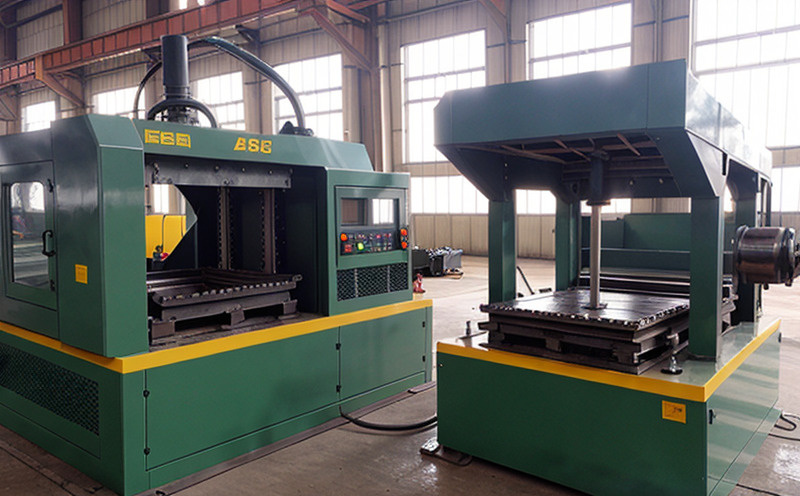EN 10291 Creep Testing of Forged Materials
The EN 10291 standard specifies the method for determining the creep strength and time to rupture of materials used in high-temperature applications, particularly relevant for industrial manufacturing and processing sectors. This service is critical for ensuring that forged components meet stringent performance requirements under prolonged exposure to heat and stress.
The process involves subjecting a specimen cut from a forging to controlled heating conditions followed by gradual loading until it undergoes plastic deformation or fails due to creep. The test measures the resistance of the material to time-dependent permanent strain at elevated temperatures, which is crucial for assessing its durability in high-stress environments such as turbines, pressure vessels, and engine parts.
The testing procedure adheres strictly to EN 10291:2018, ensuring accurate and repeatable results. Forging materials like steels, nickel-based alloys, and titanium are commonly tested for their creep behavior under specific conditions that mimic real-world operational scenarios. This ensures that the components can withstand the anticipated stresses without compromising safety or performance over extended periods.
Preparation of the specimen is critical; it must be free from defects such as cracks, inclusions, or porosity. The material should also be representative of the entire batch to ensure that the test results reflect the overall quality of the forgings being produced. Once prepared, the specimens are heated to the specified temperature and held there for a given time before starting the creep test.
The testing equipment includes high-temperature furnaces capable of maintaining precise temperatures within narrow tolerances, along with load cells that can measure small increments in force applied to the specimen. The setup ensures accurate measurement of both stress and strain over extended periods. Data is collected using sophisticated software systems that log temperature, time, and deformation continuously throughout the test.
After completing the test, engineers analyze the data to determine the creep rate, which describes how quickly the material deforms under load at a specific temperature. They also calculate the time-to-rupture (TTR), which indicates when the specimen will fail due to excessive plastic deformation. These metrics are essential for predicting the lifespan of components and optimizing design parameters.
Compliance with EN 10291 is not just about meeting regulatory requirements but ensuring that products perform reliably in harsh environments. This testing provides valuable insights into material behavior, helping manufacturers make informed decisions regarding material selection, process optimization, and product longevity.
Why It Matters
The significance of EN 10291 creep testing cannot be overstated for industries reliant on high-temperature components. Creep can lead to premature failure or even catastrophic breakdowns in critical applications such as aerospace, power generation, and petrochemical processing.
- Aerospace Industry: Turbine blades and engine parts must withstand extreme temperatures and stresses during operation.
- Power Generation: Boiler tubes and steam generators require robust materials to handle high-temperature conditions without degradation.
- Petrochemical Processing: Reactors and heat exchangers need components that can maintain integrity under severe thermal cycling.
In these sectors, the failure of a single component can result in substantial downtime, increased maintenance costs, and even safety hazards. By conducting EN 10291 creep tests, manufacturers can identify potential weaknesses early in the development process, ensuring that only materials capable of withstanding prolonged high-temperature exposure are used.
The results of these tests inform design decisions, helping to extend product lifetimes and enhance overall reliability. This is particularly important for industries where safety and performance are paramount, as even small improvements in material properties can lead to significant benefits in terms of operational efficiency and longevity.
Applied Standards
| Standard | Description |
|---|---|
| EN 10291:2018 | Method for determining the creep strength and time to rupture of materials used in high-temperature applications. |
| ASTM E739-14 | Standard test method for creep testing of metallic materials at elevated temperatures. |
| ISO 6892:2016 | General requirements for the mechanical testing of metals and alloys. |
| IEC 60529 | Protection ratings (degree of protection) for electrical enclosures. |
The application of these standards ensures that the creep testing process is consistent, accurate, and reliable. Compliance with EN 10291 specifically requires adherence to precise temperature control, loading protocols, and data analysis techniques to ensure valid results.
Quality and Reliability Assurance
- Pre-test Inspection: Rigorous inspection of specimens for defects or inconsistencies before testing begins.
- Temperature Control: Precise control over heating conditions to ensure accurate stress application.
- Data Logging: Continuous monitoring and recording of temperature, load, and deformation throughout the test.
- Analytical Review: Comprehensive analysis of data by experienced engineers to determine creep rate and TTR.
The quality assurance process is integral to maintaining consistent results across multiple tests. By adhering strictly to standard protocols and using advanced instrumentation, we ensure that every test conducted meets the highest industry standards.





